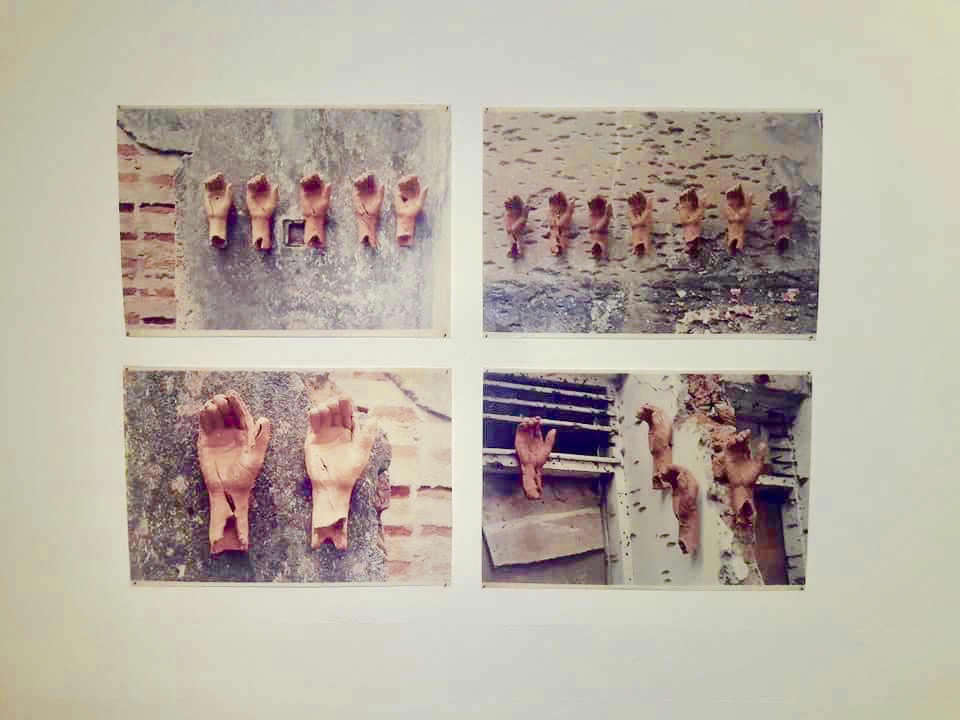A Brief Colonial History Of Ceylon(SriLanka)
Sri Lanka: One Island Two Nations
A Brief Colonial History Of Ceylon(SriLanka)
Sri Lanka: One Island Two Nations
(Full Story)
Search This Blog
Back to 500BC.
==========================
Thiranjala Weerasinghe sj.- One Island Two Nations
?????????????????????????????????????????????????Friday, February 1, 2019
The Days We Screamed


01/31/2019
Yes, we screamed. Mostly out of fear. At times, in joy when the opposing
side faced more loss than us. Lives were taken for granted, numbers of
the fallen mattered much more than lives saved, on both sides. There
were arguments, hate speech even among friends. This emotion was
reflected in the art scene as well. The exhibition “The days we Screamed” brings together paintings and artworks by then young artists who gave artistic expression to the period we lived through.
Initially artists like ACGS Amarasekara who followed the Victorian style
mainly concentrated on landscape and portraits. This trend underwent a
drastic change with the emergence of the “43 group” who introduced
Parisian modernity into Sri Lankan art. However, the art remained
figurative and representational in nature. The subject matter dealt by
the members of the ’43 group was similar to that of their predecessors –
landscapes, portraits and village scenery.
This situation underwent a change with the emergence of H.A. Karunaratne
as an influential artist with his skills acquired from New York. This
effect was witnessed in the 1960’s as the non-figurative tradition of
painting established itself as a way of expressing “spirituality” in Sri
Lankan modern art. This trend had great appeal among the people who
were conditioned by the Buddhist philosophy. Though Karunaratne’s art
practice had great relevance to Sri Lankan context in terms of its
spiritual inclination, it failed to reflect the increasing anxiety and
stresses that was gradually engulfing the Sri Lankan social life.
In the early 1970’s Sri Lankan political landscape started changing with
violence becoming an integral part of society and politics. The first
JVP insurrection of the early 1970s followed by post-election violence
in 1977 and the racial riots of the late 70’s foretold the violence that
was to be unleashed over this island nation in the years to come.
Though in the field of theatre these gradual changes were assimilated,
visual artists remained seemingly immune to all the violence that was
creeping into social life in Sri Lanka.
The early 1980s saw the worsening of ethnic divides and the start of
armed conflict between the JVP, the LTTE and the state. Even in this
political turmoil, the art of the 1980s did not reflect the changing
socio-political environment. However, a younger generation of students
who were witnessing all these changes came to the forefront in the early
90’s. Jagath Weerasinghe’s 1992 exhibition “Anxiety” marked a turning
point in the visual art scene in Sri Lanka.
With this, a young generation of artists who were independent, flexible
and energetic started using ancient and contemporary idioms with social
consciousness. Their art showed the possibility of making art with
multiple layers of cultural and social meaning. In their hands art
assumed new dimensions, beyond being a medium of pure entertainment and
enjoyment.
This period also introduced new forms of expression in visual arts which
were hitherto unknown to the gallery-going public of Sri Lanka.
Installation art and performance art became powerful medium for these
artists to express their ideas.
Artists who were at the forefront of this change included Jagath
Weerasinghe, Chandraguptha Thenuwara, Kingsley Gunatilake, Anoli Perera,
Muhammad Cader, Godwin Constantine, Pradeep Chandrasiri, Pushpakumara
Koralagedara, Bandu Manammperi and T Shanaathanan. There were younger
artists who followed the same lines later.
Jagath Weerasinghe’s paintings centred mainly around distorted male
figures expressing anguish and despair of the period. His exhibition
“Yantragala” used traditional motifs to express contemporary issues. His
innovative approach in art inspired many young artists and art
students.
Thenuwara’s art practice consisted of socially and politically
integrated subject matters. His art works reflect political conflict,
disasters, and the social and economic hardship our people have gone
through and are still going through. Thenuwara’s life experiences along
with his training in Moscow moulded him into a socially engaged art
activist. His camouflage painting and barrel installations have become
unique symbols of Sri Lankan ethnic war.
One of the notable female artists from this period is Anoli Perera.
Though Sri Lanka has a long history of producing many leading female
artists Anoli stands out in fusing ancient and modern idioms to express
the double burden (domestic and political) experienced by Sri Lankan
women.
Kingsley Gunatilake has used his exuberant palate to produce
Greenbergian-type canvases. However, his strength lies in his powerful
installation work. Kingsley can be regarded as a unique artist who used
the maximum expressive potential of installation art in Sri Lanka.
The art scene of the 1990s also saw the emergence of performance art.
The author’s first performance “Broken Palmyrah” was in 1994. This trend
was followed by Bandu Mannamperi and other younger artists later.
Editor’s Note: “The
Days We Screamed” is an exhibition which brings together art work by
this generation of artists. This exhibition is at the Theertha “Red Dot
Gallery” in Borella, and will be open to the public from the 26th of January to the 1st of February.









